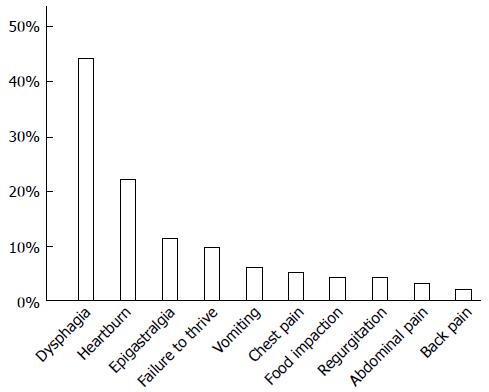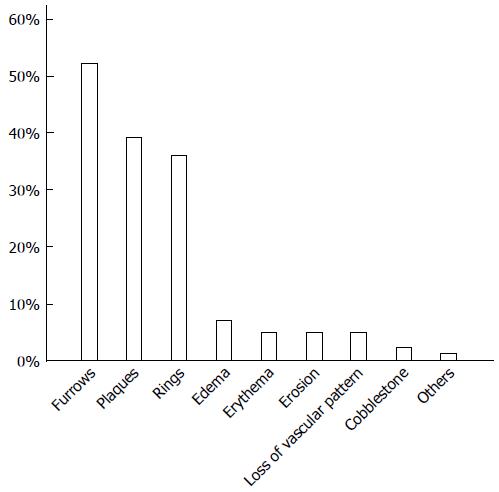Copyright
©The Author(s) 2015.
World J Gastroenterol. Jul 21, 2015; 21(27): 8433-8440
Published online Jul 21, 2015. doi: 10.3748/wjg.v21.i27.8433
Published online Jul 21, 2015. doi: 10.3748/wjg.v21.i27.8433
Figure 1 Flow chart of our systematic literature search.
Figure 2 Number of patients with eosinophilic esophagitis in all 25 studies included in this review.
The dots indicate the mean age, and the dot size indicates the number of patients. One report did not describe the ages of the included patients.
Figure 3 Reported prevalence of eosinophilic esophagitis in patients examined via upper gastrointestinal endoscopy.
In the studies using a smaller sample size, the prevalence of eosinophilic esophagitis (EoE) was higher. Different indication criteria for endoscopic examination between institutions may be partially responsible for the large variation in the reported incidence of EoE.
Figure 4 Allergic diseases reported by patients with eosinophilic esophagitis.
Twenty-one articles contained descriptions of the histories of allergic diseases among the reported patients. The most frequently reported allergic disease was bronchial asthma, followed by allergic rhinitis.
Figure 5 Symptoms reported by patients with eosinophilic esophagitis.
Twenty-four articles contained descriptions of symptoms reported by patients. The most frequently reported symptom was dysphagia, followed by heartburn.
Figure 6 Endoscopic abnormalities found in patients with eosinophilic esophagitis.
Longitudinal furrows, white plaques, and fixed/transient concentric rings were most frequently detected.
- Citation: Kinoshita Y, Ishimura N, Oshima N, Ishihara S. Systematic review: Eosinophilic esophagitis in Asian countries. World J Gastroenterol 2015; 21(27): 8433-8440
- URL: https://www.wjgnet.com/1007-9327/full/v21/i27/8433.htm
- DOI: https://dx.doi.org/10.3748/wjg.v21.i27.8433














